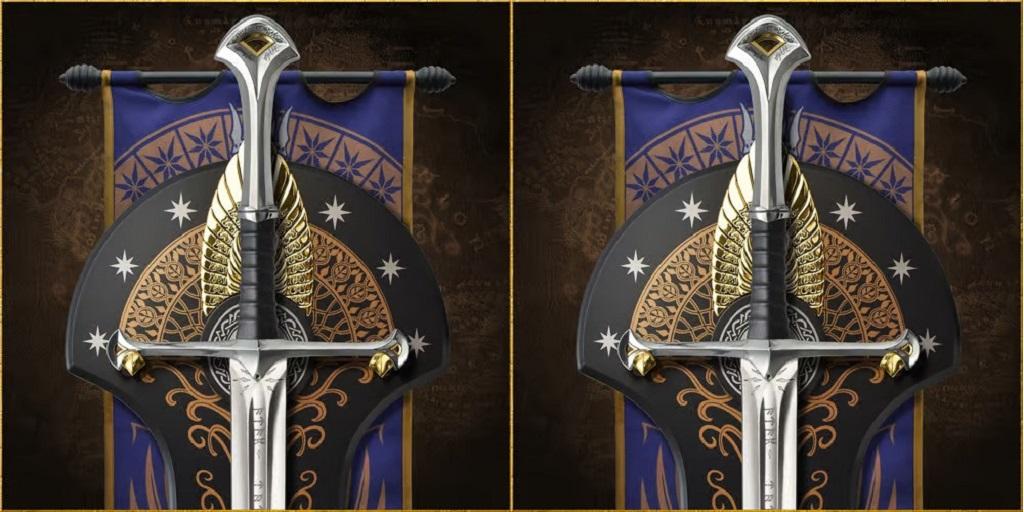Can You Use Modern Swords? (Are They Real?)

Let’s get one thing out of the way right now. What a sword looks like has absolutely no bearing whatsoever on whether or not it is “real” in the conventional and material sense of that word (more on that in a minute).
Rather, what makes a sword “real” is how it is constructed and what it is made with. Therefore, if you are looking for a “modern sword” it very well may be constructed to such a level of quality that you can take it out back and cut up some fruit or water bottles with it - or for that matter, to take it into battle, which is reflected in the modern term “battle-ready sword.”
So, that being the case, let’s take a closer look at what makes a modern sword “real” or not, as well as the origin of the term “battle-ready sword.”
What Makes a Modern Sword the Real Deal?
There are three main things that make a modern sword real in the sense that it can handle being used to do the things that swords were historically used to do, even though for most of us that just means practice and cutting up some soft targets in the back yard.
First and foremost, the sword must be made from suitable steel. There are some alloys that are suitable for making a sword and some that aren’t. For instance, 440 steels are not suitable for making a real sword, whereas alloys in the 10XX class, like 1045, 1055 and 1095 are. Some tool steels, like T10, are, whereas others actually have too much carbon and therefore are too brittle.
The next most important thing that a real modern sword needs is a suitable temper. Not all swords are tempered the same way; for instance, some swords are tempered so as to flex like a spring; others, like traditional Japanese swords, are given a differential tempering process that hardens the edge while softening the spine. Shorter swords may be tempered to be harder, in order to hold an edge, but will be less flexible and less resilient to chipping or shattering.
The temper is as important as the alloy of steel selected, as it is the temper that gives a sword the ability not just to hold an edge, but to flex without breaking, and to resist being struck.
Lastly, a real modern sword must be made with a complete, full tang that is part of the blade stock, and which is not pinned or welded on. The tang should be at least one third the width of the blade, be free of sharp stress risers, and extend to the end, or nearly to the end of the hilt. Most quality battle-ready swords, modern or not, have a tang that not only reaches the pommel but which extends through it.
If a modern sword has all these attributes, it is “battle-ready,” but where did this term come from and why?
Where Did the Term Battle-Ready Sword Come from?
Back in the day, all swords were battle ready swords, and so the term is a modern term used to distinguish swords that can be used for combat from those that are distinctly, and solely, made for ceremonial purposes.
A battle-ready sword can be used for cutting practice, whereas a sword intended for display, otherwise known as a wallhanger, cannot. It is a relatively modern term that communicates whether a sword can be used for “sword things” or if it should only be displayed and never used.
Explore Battle-Ready Modern Swords
Interested in perusing a wide collection of battle-ready modern swords? Visit True Swords, the authority in all things swords and weapons, and see what you can find - and contact them directly if you have any questions.
For more information about OTF Knife and Odachi Sword Please visit: True Swords.
- Art
- Causes
- Crafts
- Dance
- Drinks
- Film
- Fitness
- Food
- Spiele
- Gardening
- Health
- Startseite
- Literature
- Music
- Networking
- Andere
- Party
- Religion
- Shopping
- Sports
- Theater
- Wellness



